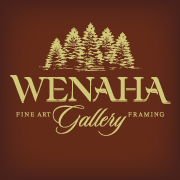Stay Wild — Always Greener by Bev Doolittle

Fences are made to be gone over, under, or around — that is, if we’re free. Always Greener, original stone lithograph — remarque, by Bev Doolittle
Whether it’s a mustang in the Southwest desert or a dray horse pulling a wagon, horses retain a sense of their wild side.
They may be circumscribed by fences, but that doesn’t keep them from jumping over, or even just nudging under to nibble grass. In their eyes, when they look at you, horses exhibit an intelligence and awareness that says,
“You may think you can tame me. Maybe you’ll put a harness on me. You’ll probably ride me. You can even say that you ‘own’ me. But the essence of who I am will always be wild and free.”
While taming animals is important to humans, because we need their strength, their abilities, or even just their companionship to add to our lives, it’s always wise to remember that the most domesticated animal retains an unexpected, wild side — a side that we cannot fully control, nor should we want to.
The issue becomes even more important when we consider the concept of taming humans — so that their strength, their abilities, their creativity, can be made available for the use of others. In some times, in some places, this becomes slavery, a disregard of dignity that reduces people to work animals. In more “enlightened” times, societies and corporations can use people without thought to their independence and freedom, their essential wild side that keeps them unique, individual, and precious. But humans are not, nor ever will be, just an employee, a taxpayer, a citizen, a unit of obedience, a social security number.
Fences? They’re Made to Be Climbed or Jumped Over
Always Greener, an original stone lithograph by Bev Doolittle, shows the innovation and determination that living creatures exhibit when they encounter obstacles. In this case, a horse reaches through the slats of a fence to access the grass — which is indeed greener — on the other side. For now, poking its head through is enough. Some day, when the green grass within reach is all nibbled and that left in the paddock trampled, the horse may decide to take a more radical, wild move and jump the fence altogether. It will never be fully tame, and in a way, would we really want it to be?
Stay Wild — You’re Not a Farm Animal
 The featured image to this article is Always Greener by Bev Doolittle. You may purchase the print online at this link. Always Greener is beautifully framed and ready to hang.
The featured image to this article is Always Greener by Bev Doolittle. You may purchase the print online at this link. Always Greener is beautifully framed and ready to hang.
More works by Bev Doolittle are at this link.
If this post has encouraged you, please pass it on.







